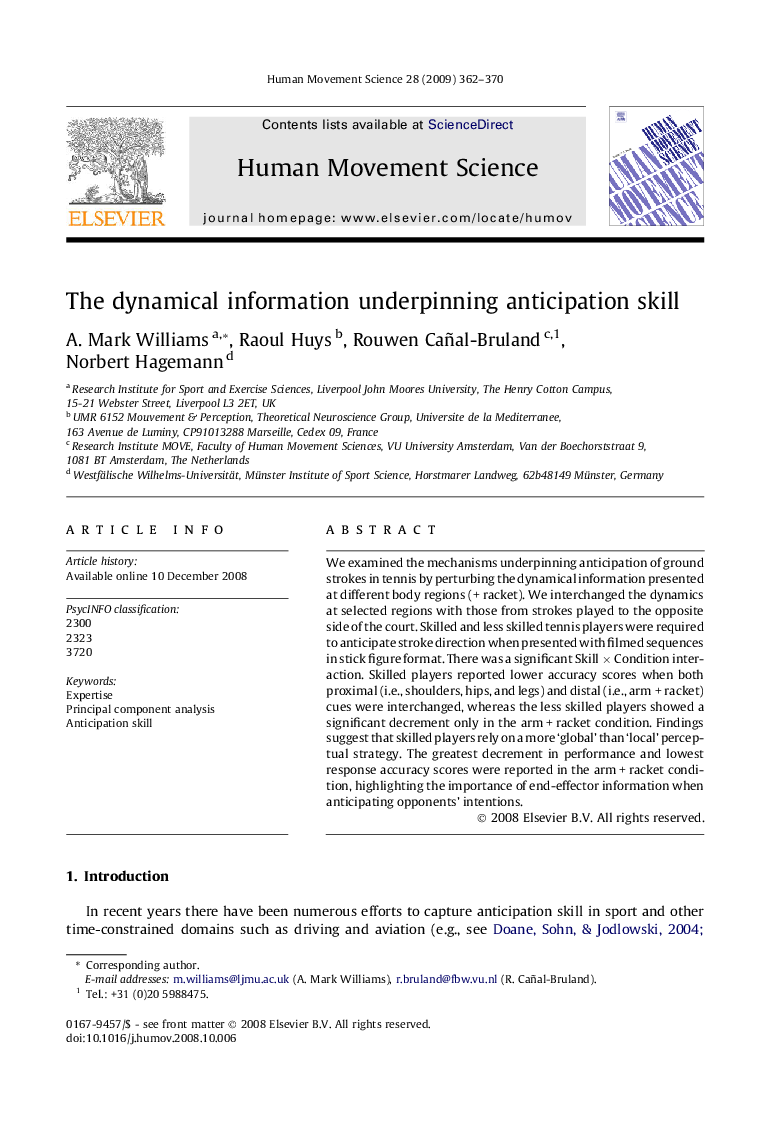| Article ID | Journal | Published Year | Pages | File Type |
|---|---|---|---|---|
| 928846 | Human Movement Science | 2009 | 9 Pages |
We examined the mechanisms underpinning anticipation of ground strokes in tennis by perturbing the dynamical information presented at different body regions (+ racket). We interchanged the dynamics at selected regions with those from strokes played to the opposite side of the court. Skilled and less skilled tennis players were required to anticipate stroke direction when presented with filmed sequences in stick figure format. There was a significant Skill × Condition interaction. Skilled players reported lower accuracy scores when both proximal (i.e., shoulders, hips, and legs) and distal (i.e., arm + racket) cues were interchanged, whereas the less skilled players showed a significant decrement only in the arm + racket condition. Findings suggest that skilled players rely on a more ‘global’ than ‘local’ perceptual strategy. The greatest decrement in performance and lowest response accuracy scores were reported in the arm + racket condition, highlighting the importance of end-effector information when anticipating opponents’ intentions.
